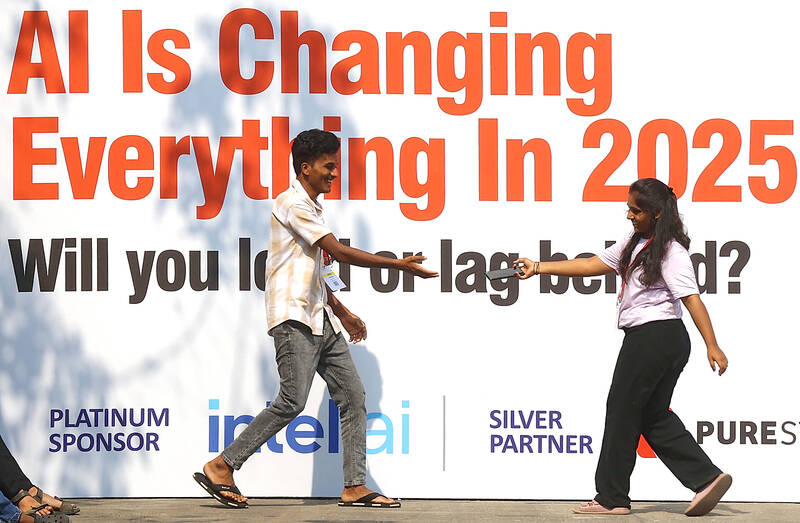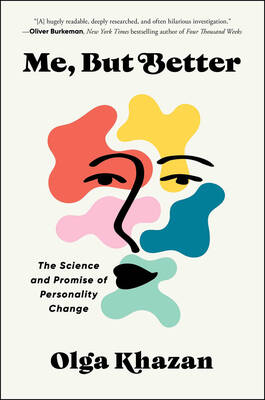“Stop Hiring Humans” read a provocative sign at an AI conference in Las Vegas, where the impact of new artificial intelligence models on the world of work had sparked some unease.
“We’re not worried about tiptoeing around. We’re sparking the conversation,” said Fahad Alam of Artisan, a startup, at the HumanX AI event.
The San Francisco company is promoting AI agents — virtual sales representatives that identify potential customers, contact them, write emails and schedule appointments.

Photo EPA-EFE
AI agents, which are supposed to make decisions that are usually made by humans, have become the latest buzzword of the generative AI story that began with the release of ChatGPT in 2022.
With its offering, Artisan’s typical avatar, Ava, costs 96 percent less than a human performing the same tasks, according to the company’s Web site.
The startup’s straight-to-the-point approach sharply contrasts with most generative AI companies, who tread cautiously on whether ChatGPT-like technologies will leave human workers unemployed by the wayside.
“I don’t fundamentally think it’s about displacing employees as much as better leveraging them for the things only humans can do,” said Josh Constine of SignalFire, a venture capital firm.
Predictions can vary wildly. Goldman Sachs estimates AI could eliminate 300 million jobs globally through automation.
An Metrigy report last year found 89 percent of firms surveyed reduced customer relations staff in the previous year due to generative AI.
On the other hand, 70 percent of major companies surveyed by the World Economic Forum said they planned to hire workers with AI-related skills in the coming years.
“It’s natural evolution,” said Joe Murphy of D-iD, which offers video avatars and recently struck a partnership with Microsoft. “Like the car’s invention, AI will create a new sector. Jobs will be created and lost simultaneously.”
Supporting this theory, data from the US Department of Labor shows jobs for secretaries and administrative assistants fell from 4.1 million to 3.4 million between 1992 and 2023, coinciding with the rise of office computing.
During the same period, the number of computer scientists more than doubled, from approximately 500,000 to 1.2 million.
Still, given the sensitivities about replacing humans, some advise discretion.
“You’re selling software that replaces a significant part of their team,” said Tomasz Tunguz, founder of Theory Ventures. “You can’t sell that overtly.”
“Some clients candidly don’t want it known they’re using AI,” added Alam.
‘INEVITABLE’
There is little doubt that some kind of upheaval of the workplace is underway, but its precise impact remains uncertain.
Analysts predict job losses for programmers, call center operators, translators and travel agents.
However, others caution against taking bold statements — or reassurances — by startups at face value.
“Technology innovators learn communication skills by overstating the positive, underplaying the negative,” said Mark Hass, marketing professor at Arizona State University.
But many startups reject the notion they’re misleading on job impacts.
“The majority of people we’re talking to aren’t doing this because of efficiency. They’re doing this because of top-line revenue growth,” said Paloma Ochi of Decagon, a marketing AI startup. “And when the business grows, that’s good for everyone. There are going to be more jobs for humans within that business.”
“Most customers don’t want to let people go,” said Joshua Rumsey, a senior sales engineer at Aisera, whose AI agents are used in finance and HR. Though they are “looking to grow without hiring new agents as existing ones leave.”
Given the disruptions, Hass advocated for greater transparency, warning that surprising the public with negative impacts on livelihoods could lead to backlash.
“Talking about the implications doesn’t weaken the case for AI, because I think it’s inevitable. Not talking about it in a wholesome way creates the opportunity for misunderstanding,” he said.

Last week, the the National Immigration Agency (NIA) told the legislature that more than 10,000 naturalized Taiwanese citizens from the People’s Republic of China (PRC) risked having their citizenship revoked if they failed to provide proof that they had renounced their Chinese household registration within the next three months. Renunciation is required under the Act Governing Relations Between the People of the Taiwan Area and the Mainland Area (臺灣地區與大陸地區人民關係條例), as amended in 2004, though it was only a legal requirement after 2000. Prior to that, it had been only an administrative requirement since the Nationality Act (國籍法) was established in

Three big changes have transformed the landscape of Taiwan’s local patronage factions: Increasing Democratic Progressive Party (DPP) involvement, rising new factions and the Chinese Nationalist Party’s (KMT) significantly weakened control. GREEN FACTIONS It is said that “south of the Zhuoshui River (濁水溪), there is no blue-green divide,” meaning that from Yunlin County south there is no difference between KMT and DPP politicians. This is not always true, but there is more than a grain of truth to it. Traditionally, DPP factions are viewed as national entities, with their primary function to secure plum positions in the party and government. This is not unusual

The other day, a friend decided to playfully name our individual roles within the group: planner, emotional support, and so on. I was the fault-finder — or, as she put it, “the grumpy teenager” — who points out problems, but doesn’t suggest alternatives. She was only kidding around, but she struck at an insecurity I have: that I’m unacceptably, intolerably negative. My first instinct is to stress-test ideas for potential flaws. This critical tendency serves me well professionally, and feels true to who I am. If I don’t enjoy a film, for example, I don’t swallow my opinion. But I sometimes worry

US President Donald Trump’s bid to take back control of the Panama Canal has put his counterpart Jose Raul Mulino in a difficult position and revived fears in the Central American country that US military bases will return. After Trump vowed to reclaim the interoceanic waterway from Chinese influence, US Defense Secretary Pete Hegseth signed an agreement with the Mulino administration last week for the US to deploy troops in areas adjacent to the canal. For more than two decades, after handing over control of the strategically vital waterway to Panama in 1999 and dismantling the bases that protected it, Washington has